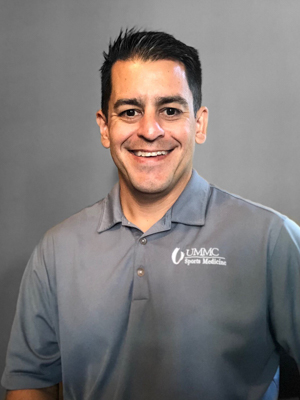Avoid common youth sports injuries, burn out
As youth sports begin spring practices and those first few games, unnecessary sprains and strains can put a damper on the season even before it starts.
That’s because children and adolescents have been inactive for months – especially during the pandemic. They've become unaccustomed to the fatigue that can come with a return to the ballfield.
Complicating that is the fact that children are still growing, making them more prone to sports injuries. And when a child focuses on just one sport, often playing it year-round, injury-producing fatigue can become much more of a problem and a challenge to manage.

“It’s important for kids to ramp up into full activity,” said Jeff Martinez, supervisor of sports medicine in the Department of Orthopaedic Surgery and Rehabilitation at the University of Mississippi Medical Center. “If you’ve taken a big break, you should not be expected to jump back to your previous level. If you do, it can lead to injuries early on.”
Children and adolescents can suffer what’s known as overuse injury to a bone, muscle or tendon caused by repetitive movements such as pitching. That stress causes injuries because those parts of the body haven’t gotten the chance to rest or heal.
Such injuries can be progressive, beginning with pain after physical activity and ramping up to diminished performance caused by pain, or chronic pain that won’t go away despite rest.
What some parents and younger children don’t understand is that “fatigue is the first sign that you need to pay attention to your body,” Martinez said. “When a young child’s arm gets tired, they don’t know how to tell someone that, so they keep throwing. Rest is an important part of training.”
Much as the start of the new season or practices is exciting and fun, Martinez said, kids should pace themselves to prevent injuries when playing “overhead” sports such as baseball, tennis or volleyball, or when running.
“If you’ve taken several months off from doing anything, you need to go back down to 60 to 75 percent maximum intensity or duration of what you did before,” Martinez said. “Over the course of several weeks, you can safely increase it by another 10 percent for activities such as running, throwing or playing tennis.”
On a particular day, Martinez said, a young athlete might reach their fatigue level after 30 to 45 minutes, or after 30 to 45 throws. “Young kids playing baseball should never pitch or throw with elbow or shoulder fatigue,” Martinez said. “That will definitely lead to injury.”
At UMMC’s sports medicine clinic, “we see a lot of fractures, to be quite honest,” Martinez said. “Young kids with open growth places don’t get sprains. They get degrees of fractures.
“Any time they roll their ankle, we are looking at what separation there is from the growth plate. A young kid with elbow pain or who rolls their ankle needs an X-ray. It’s not just a sprain,” Martinez said. “X-rays can show separation at the growth plate on the front of the knee in a younger child that presents with symptoms of knee tendonitis.”
Parents and coaches should especially be vigilant when children are playing one sport all year long, Martinez said. “There are winter soccer seasons, and then kids go into recreational soccer season. Shin splits are the most common overuse injury in a runner or soccer player, and you can certainly get that from fatigue and not adequately resting.”
Experts from the American Academy of Pediatrics (AAP) agree. “Athletes should avoid specializing in one sport before late adolescence,” the Academy says on its website. “Child ‘superstars’ are often injured or burn out prior to college.”
Martinez advocates children playing multiple sports. “Focusing on one sport is not a good thing for overuse injuries,” Martinez said “Playing multiple sports will develop your body more comprehensively from head to toe.
“A cheerleader who also plays soccer might have better lower body control at the top of a pyramid because she’s developed her core more than a cheerleader who has never played a sport where you run or change directions,” he said. “If a pitcher runs track or cross country, it will give their arm rest in the off-season, and a pitcher who runs cross-country will develop more endurance in their legs, which is key to a pitcher’s performance.”
But conversely, Martinez said, “you don’t want a child to participate in a sport and not want to be there. That can lead to injury. Playing no sport might be better than forcing a child to participate in one that they don’t like.”
His advice to parents? “Watch the child’s body language. Parents will know how their child appears better than anyone else – whether they are grimacing after a throw or overhead serve in tennis, or limping after running.
“With a young child, the parent might need to ask: How are you feeling?” Martinez said. “Don’t ask if their shoulder hurts. The child might say no, or might not say they are tired. Ask them the open-ended question.”
At the end of the day, the AAP says, “your goal should be to promote a well-rounded athlete who can enjoy regular physical activity for a lifetime.”
The above article appears in CONSULT, UMMC’s monthly e-newsletter sharing news about cutting-edge clinical and health science education advances and innovative biomedical research at the Medical Center and giving you tips and suggestions on how you and the people you love can live a healthier life. Click here and enter your email address to receive CONSULT free of charge. You may cancel at any time.



